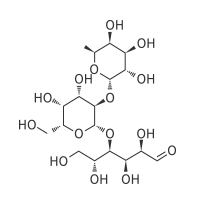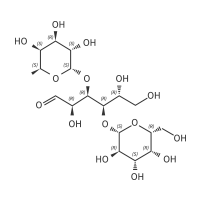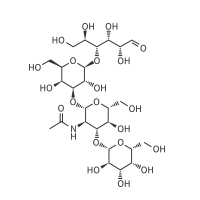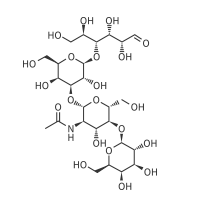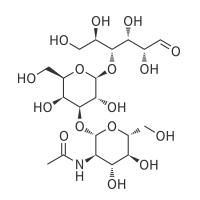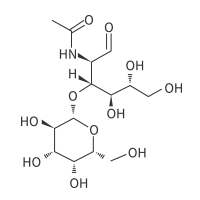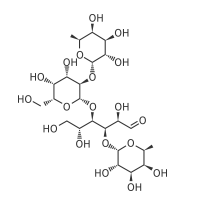母乳第三大营养物质
HMOs(母乳低聚糖,Human Milk Oligosaccharides)是母乳中仅次于乳糖和脂类的第三大固体营养成分,在人乳中的含量比其他哺乳动物乳汁中高10~100倍,牛乳中低聚糖含量很少[1]。HMOs含量在初乳中最高,约为20~25g/L,成熟乳中含量约为5~20g/L[2]。目前已知的HMOs种类超过200种,已明确结构的有100多种。这些HMOs具有各自特定的结构和功能,主要分为中性岩藻糖基化HMOs(2′-FL、3-FL、DFL等)、中性非岩藻糖基化HMOs(LNT、LNnT、LNTrII、LNB等)和酸性唾液酸化HMOs(3′-SL、6′-SL等)[2]。
HMOs的国际应用已逾多年。自2015年美国推出首款添加HMOs的婴幼儿配方食品后,相关产品已登陆欧美、中东、亚太和拉美等全球160多个国家和地区。其应用范围广泛,涵盖婴幼儿配方食品、成人营养品、乳制品、功能性饮料,以及消化健康相关的膳食补充剂和功能性食品。
| 中性岩藻糖基化HMOs在乳液中的含量 | 中性非岩藻糖基化HMOs在乳液中的含量 | 酸性唾液酸化HMOs在乳液中的含量 | |
| 初乳(人乳) | 13.6-17 g/L | 13.6-17 g/L | 13.6-17 g/L |
| 成熟乳(人乳) | 3.25-13 g/L | 0.85-3.4 g/L | 0.9-3.6 g/L |
| 牛乳 | 0.0003-0.0006g/L | 0 g/L | 0.021-0.024 g/L |
母乳第三大营养物质

有效治疗坏死性
小肠结肠炎(NEC)[5]HMOs市场应用
-
婴配奶粉:核心添加成分,模拟母乳关键组分
-
特医食品:重要功能性配料,用于特殊医学用途婴儿配方食品等
-
功能性食品 :高端添加成分,应用于酸奶、饮料、谷物等
-
营养补充剂:直接成分,制成粉剂、滴剂等补充形式
-
益生菌:添加成分,用于益生菌产品中
-
化妆品:潜在功能性成分,研究应用于护肤产品(如保湿)
我们的产品
[1]Sander S et al. Goat milk oligosaccharides: Their diversity, quantity, and functional properties in comparison to human milk oligosaccharides[J]. Journal of agricultural and food chemistry (2020): 13469-13485.
[2]中国食品科学技术学会.母乳低聚糖(HMOs)的科学共识[J].中国食品学报,2023,23(06):452-457.
[3]Yu et al. The principal fucosylated oligosaccharides of human milk exhibit prebiotic properties on cultured infant microbiota[J]. Glycobiology (2013): 169-177.
[4]Zhu et al. Recent progress on health effects and biosynthesis of two key sialylated human milk oligosaccharides, 3′-sialyllactose and 6′-sialyllactose[J]. Biotechnology advances (2023): 108058.
[5]Chhinder P et al. The human milk oligosaccharides 2’-fucosyllactose and 6’-sialyllactose protect against the development of necrotizing enterocolitis by inhibiting toll-like receptor 4 signaling[J].Pediatric research (2021): 91-101.
[6]Cheng et al. Human milk oligosaccharides differently modulate goblet cells under homeostatic, proinflammatory conditions and ER stress[J]. Molecular nutrition & food research (2020): 1900976.
[7]Elena et al. Oral supplementation of 2′-fucosyllactose during lactation improves memory and learning in rats[J].The Journal of nutritional biochemistry (2016): 20-27.


